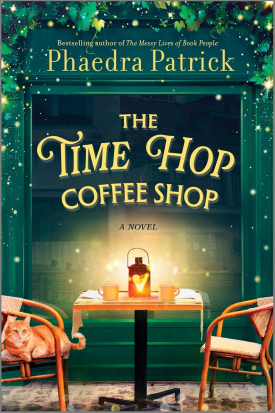Diane Wilson Books In Order
Book links take you to Amazon. As an Amazon Associate I earn money from qualifying purchases.Publication Order of Standalone Novels
| The Seed Keeper | (2021) | Description / Buy at Amazon |
Publication Order of Non-Fiction Books
| Spirit Car | (2006) | Description / Buy at Amazon |
| Beloved Child | (2011) | Description / Buy at Amazon |
| Ella Cara Deloria | (2021) | Description / Buy at Amazon |
Diane Wilson is an American fiction author best known for her novel The Seed Keeper. She uses her personal life experiences to showcase a broader historical and social context. Diane’s memoir Spirit Car won a 2006 Minnesota Book Award. In 2012, the memoir was chosen for the One Minneapolis One Read Program. Additionally, Diane’s nonfiction book, Beloved Child, won the Barbara Sudler Award in 2012 by History Colorado.
Diane has worked as a mentor for Intermedia’s Beyond the Pale and Loft Emerging Artist program. Some awards she has won include a 2018 AARP/ Pollen 50 over 50 Leadership Award, the Minnesota State Arts Board, the Jerome Foundation, and a 2013 Bush Foundation Fellowship.
In her 2021 novel, The Seed Keeper, Diane Wilson, through her heroine Rosalie Iron Wing explores the origins of seed saving among the Dakotas and its importance to all of us. Rosalie has a rich history, but she knows very little of it; she was orphaned 12 years after her father died of a heart attack. Her memories of his father are warm and welcoming, but those of her mothers are mainly shapes and shadows. She went into foster care, against the wishes of her great aunt Darlene where she spends her days in a cold, damp basement stowing thrift store books under her bed.
Rosalie is a resident of Minnesota, where giant bison and legendary mammoths once lived. Over 50 miles from the nearest reservation, she attends a most populated school with white children that nickname her with endless names, but Rosalie doesn’t care about any of them. She never appreciated the value of a good friendship until she met Gaby Makepeace, one of the few brown students in the school. To make some money, Rosalie finds a temporary job on a farm. The employer (John) thinks that she and the other two boys hired are ill-equipped; Rosalie uses a garbage bag as a raincoat and has no boots but shows the employer how hardworking she is.
Rosalie and John’s story forms the backbone of his book. John’s past and current life revolve around the United States agriculture system. Even though Rosalie isn’t familiar with all her history, her childhood life with her father in a cabin in the woods ensures that she created a strong bond with nature. She’s a woman easy inside herself when surrounded by flora and fauna, and she forms a stronger relationship with nature than humans. She and John are an unlikely couple, but the author uses them to show the juxtaposition of the Dakota way of living and that of the American farmer.
The cloud of the 1862 US-Dakota War still hovers over the towns and cities of Minnesota. 38 native Indians were hanged in what is currently considered the biggest mass execution in American history. The natives engaged in war because the United States government had gone against the treaties, and this meant that after the war, the entire Dakota land was open for settlement. That’s one reason why Rosalie often thinks that John’s family land once belonged to the Dakhota Indians.
Diane’s prose is simple and easy to follow. Soothing with a certain cadence, the story’s rhythm will quickly hook you into Rosalie’s world. Like the wind smoothly sweeping through the trees, the story isn’t showy or dramatic. However, there is something special about it that feels life-giving.
Weighted as it is with sadness, this story is gently narrated so that the reader is drawn into it like a warming campfire in a cold season. The language through which the story is narrated, which initially seems unusual, eventually becomes familiar. As the reader, you get to know that there is a minute difference between the heroine knowing her plants and vice versa. The two take care of each other, water the plants, and collect seeds at the end of the season to preserve them for the next season.
Diane’s writing is similar to the art of the basket weaver. A basket weaver turns, folds, and weaves the willow strips till they become a beauty bag that can hold what is precious. The basket is not something temporary or safe that is kept away from thieves. Instead, it is a means for carrying what must not be left behind, and the basket and its contents honor each other, and so do Rosalie and the plants.
The 2006 book Spirit Car is Diane Wilson’s attempt to retrieve her family stories and trace her Dakhota heritage. The book is a collection of oral history, family photos, and the author’s research into historical events.
Diane’s uses a popular technique known as intuitive anthropology in the book’s first section to reconstruct what people might have felt, thought, said, and done under different circumstances during and after the Sioux war, commonly known as Dakhota War that took place in 1862. The portrayals are based on family stories about her great-grandparents and other survivors of the war who were forcibly moved to Nebraska and then allowed to settle years later on a reservation in Nebraska and Minnesota.
The first section of this book includes the stories of the problems encountered by her maternal grandparents and their descendants, including the challenges her mother had to face in the early and mid-20th century. The author’s telling of these events is genuinely engaging.
The second part of this book is a memoir about the author’s efforts to recover this information. This section includes the author’s struggles to integrate her Dakota heritage into her lifestyle. The shame the author has encountered as a woman of mixed blood is insightfully described in the book. Additionally, well presented in the book is the theme of trauma that her ancestors experienced over things such as forced removal from their native lands with thousands of deaths, poverty, and involuntary placement of children in missionary boarding schools.
Lastly, Diane Wilson’s direct narrative prose and the inclusion of photos in the books enhanced the story’s readability. The author added two family trees and nine-page source notes at the end of the book for the readers to learn more about Dakhota heritage.
Book Series In Order » Authors »


 Any issues with the book list you are seeing? Or is there an author or series we don’t have? Let me know!
Any issues with the book list you are seeing? Or is there an author or series we don’t have? Let me know!